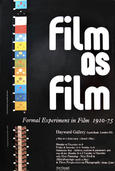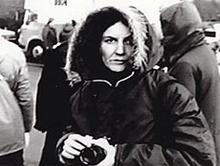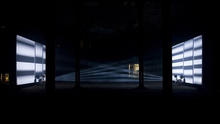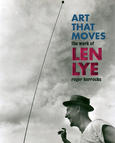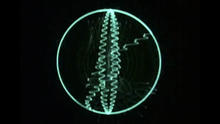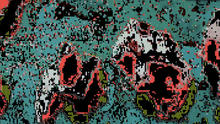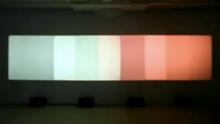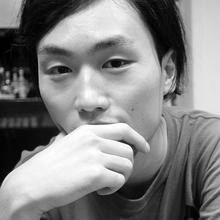Dresden Dynamo
(1971)by Lis Rhodes is the result of experiments with the application of Letraset and Letratone onto clear film. It is about how graphic images create their own sound by extending into that area of film which is ‘read’ by optical sound equipment.
Dresden Dynamo (1972), the earliest film in Lis Rhodes’ abridged but commanding six-work retrospective, is a caffeinated ten-minute-long abstraction, its jitterbugging lines and grids of circles created by applying Letraset to film stock and adding red and blue colour filters; the indeterminate bleep-and-hum optical soundtrack, sounding like a monkey messing with a Moog, was discovered on the film when the patterned celluloid received its first playback.
Source: Frieze Magazine
Dresden Dynamo is a film that attempts to abstractly present the limited nature of human senses, the conflicts and subversion. The visuals are dictated by the sound. In spasmodic fits, the images flit between dulled blues and red, oscillating and grinding into each other. Lis Rhodes ingeniously applied patterns of Lettratone and Lettraset stickers to the film reel itself, as to create a film, without a camera. The effect is of industrial psychedelia. The process is titillatingly discordant with a soundscape of white noise and bleeps that tangentially veers towards melody. It reminded me of the neurological condition of synesthesia where stimulation of one sense e.g. the taste of apples, will arouse another e.g. the colour purple.
Source: Kollektivnye
The final print has been achieved through three, seperate, consecutive printings from the original material, on a contact printer. Colour was added, with filters, on the final run. The film is not a sequential piece. It does not develop crescendos. It creates the illusion of spatial depth from essentially, flat, graphic, raw material. (Tim Bruce, London Filmmakers Co-op Catalogue 1993)
Source: LUX
Dresden Dynamo from 1972 is a wonderfully rich archetypal ocular pleasure feast, a psychedelic trip of a film. No camera was used, instead marks were made directly onto the film, and the optical track mechanically reads a sound in response. This is used to make a material connection between seeing and hearing, inducing for the viewer a hypnotic state of visual indulgence.
Source: The List
